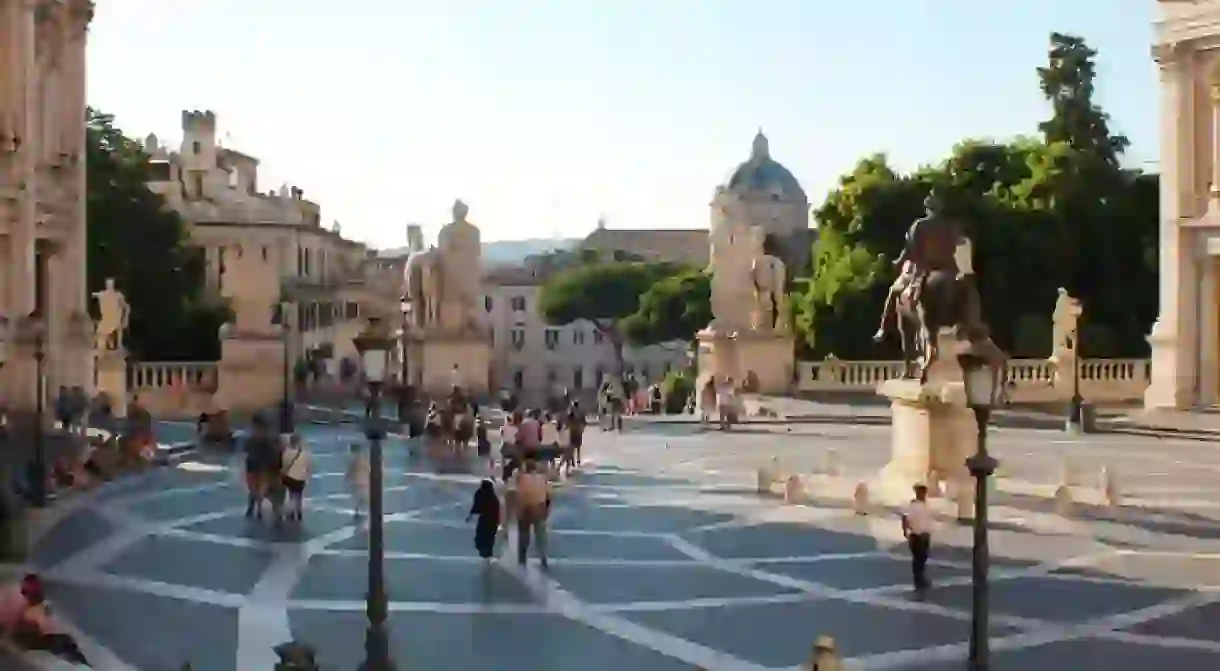Where To Find Michelangelo's Art In Rome

One of the most brilliant and influential artists in history, Michelangelo di Lodovico Buonarroti Simoni had a long and productive career that spanned disciplines from sculpture and painting to architecture, engineering, and even poetry. Born in a small town near Arezzo in Tuscany, Michelangelo spent his formative years in Florence. The Renaissance artist was invited to Rome in 1496 for the first time and was commissioned on numerous occasions over the decades to produce statues, paint frescoes, and develop architectural plans for churches and piazzas around the city. Here are his most renowned works in the capital.
Pietà
Pietà, which means pity or compassion, is an emotive sculpture that depicts the Virgin Mary grieving over the body of Jesus after his crucifixion. It was completed when Michelangelo was only 24 years old and is an incredible testament to his early genius and artistry: it balances the Renaissance ideals of classical beauty with naturalism and has mesmerizing details in Mary’s drapery and Jesus’s flesh. It was commissioned by the French Ambassador to the Holy See, Cardinal Jean de Bilhères, in 1498 for this funeral monument but was moved to its location inside St. Peter’s Basilica in the 18th century.


Moses
Michelangelo was summoned back to Rome in 1505 by the newly elected Pope Julius II who tasked him with sculpting his tomb, an enormous structure that was supposed to include 20 statues and take 5 years to complete. Unfortunately, Michelangelo’s work was constantly interrupted by other projects — Pope Julius even asked him to paint the Sistine Chapel during this period. The ambitious tomb was never finished, but Michelangelo created a smaller version that now lies within the Basilica di San Pietro in Vincoli. The focal point of the structure is the statue of the horned Moses, which remains one of his greatest sculptures in Rome and is celebrated for its sense of dynamism and the contained energy of the figure’s seated position.
Sistine Chapel
Michelangelo’s Sistine Chapel ceiling (1508–1512) is perhaps his most renowned work of art. The elaborately ornamented ceiling contains 343 figures and depicts the story of the Old Testament including the Creation, Fall of Man, and Promise of Salvation through the prophets and the life of Jesus. The nine central panels are the most famous and depict the Book of Genesis, from God’s creation of Earth and mankind to the story of Noah and the Great Flood. With its extreme detail, vivid colors, and mastery of chiaroscuro shading techniques, it demonstrates Michelangelo’s sublime talent for painting the human figure in various modes and postures, heavily influencing future artists. Twenty years after he completed the ceiling frescoes, he was brought back to Rome to paint The Last Judgement on the altar of the Sistine Chapel. It illustrates the second coming of Christ and the last judgement by God of all humanity.

St. Peter’s Basilica
Although various Renaissance artists and architects helped to shape the initial architectural plan of St. Peter’s Basilica, it was Michelangelo who was appointed to be the principal architect of the building in 1546. He unified the creative visions of previous ideators, incorporating Bramante’s Greek Cross as a central feature and using Sangallo’s plans to develop the structure of the large dome which remains an important part of his legacy.

Piazza del Campidoglio
The splendid concentric piazza that lies on Capitoline Hill was designed by Michelangelo in 1536. It was commissioned by Pope Paul III in anticipation of a visit by Charles V, whom he wanted to impress with the splendor of Rome. The piazza is interesting because it faces Vatican City rather than the Roman Forum, which lies behind it, possibly symbolizing a forward-looking gaze toward the future rather than the city’s ancient past. Michelangelo also restored one of the palaces that already lay in the piazza and built its twin directly in front of it. Another key element of the piazza is its grand cordonata ramp staircase, which allowed animals such as horses and donkeys to climb it.

Santa Maria degli Angeli e dei Martiri
One of Michelangelo’s lesser-known masterpieces in Rome is the Basilica of Santa Maria degli Angeli e dei Martiri in Piazza della Repubblica. Built inside the ancient Baths of Diocletian dating back to 300 AD, it is difficult to understand the scale of the church from the nondescript brick façade. The plan starts with that of a Greek cross, much like St. Peter’s Basilica, and yet the transept (transverse section that lies across the main body of the building, forming the ‘arms’ of the church) are so long that the church appears wider than it is long. The unique shape and dimensions of the church showcase the enormous scale of Roman construction and Michelangelo’s open-mindedness and ability to adapt designs within physical constraints.














